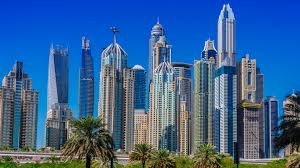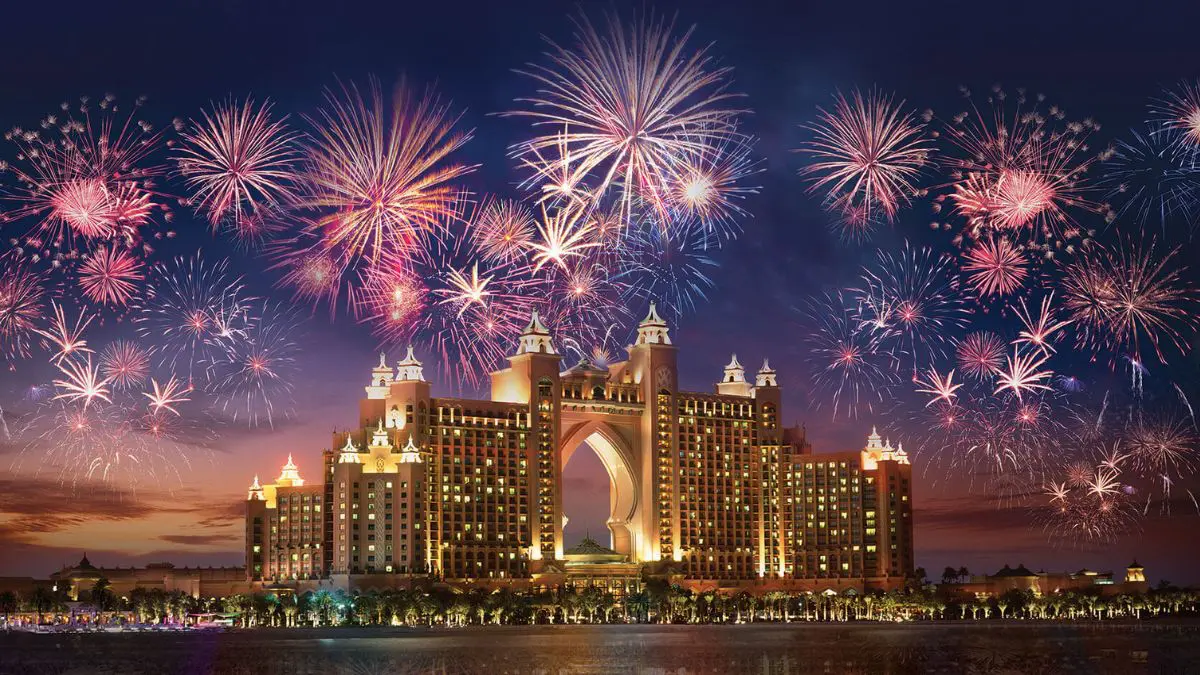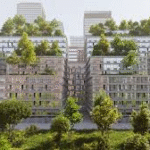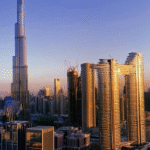Now Reading: Dubai Real Estate: 6 Emirate-Based REITs Offering Diversified Exposure in 2025
-
01
Dubai Real Estate: 6 Emirate-Based REITs Offering Diversified Exposure in 2025
Dubai Real Estate: 6 Emirate-Based REITs Offering Diversified Exposure in 2025

Table of Contents
The UAE’s real estate market in 2025, valued at AED 893B with 331,300 transactions in 2024 (30% value growth, 25% volume growth), thrives on tax-free policies, 6–8% rental yields, and a 10.3M population. Real Estate Investment Trusts (REITs) provide diversified exposure to this market, offering 6–8% dividend yields, liquidity, and professional management.
Six emirate-based REITs Emirates REIT, ENBD REIT, Al Mal Capital REIT, Masdar Green REIT, Dubai Residential REIT, and MENA Real Estate Fund cover assets across Dubai, Abu Dhabi, Sharjah, Ajman, Ras Al Khaimah, and Fujairah, spanning commercial, residential, educational, and sustainable properties.
Supported by 20M tourists, the Golden Visa (AED 2M+), and infrastructure like Etihad Rail, these REITs align with the Dubai 2040 Urban Master Plan and UAE Net Zero 2050. This guide analyzes each REIT, its portfolio, and investment potential, backed by 2024–2025 data.
1. Emirates REIT
- Base: Dubai, DIFC
- Portfolio: Sharia-compliant, USD 1B+ in assets, including 9 commercial properties (Index Tower, Index Mall in DIFC) and 3 schools (GEMS World Academy). Covers Dubai and Sharjah. Occupancy: 95% in Q1 2025.
- Performance: Listed on Nasdaq Dubai since 2014, share price AED 0.50 (down 63% from AED 1.36 IPO). Dividend yield: 6–7% in 2024. Net asset value (NAV): USD 734M as of Q1 2025.
- Investment Potential: 6–7% yields, moderate capital appreciation (5–8% by 2026). Benefits from Dubai’s commercial hub status (3.8M population, 91.8M DXB passengers). Risks: market volatility, historical share price decline. Ideal for income-focused investors.
2. ENBD REIT
- Base: Dubai, DIFC
- Portfolio: Sharia-compliant, USD 202M NAV as of December 2024, with office, residential, and alternative assets (retail, hospitality) across Dubai and Ajman. Managed by Emirates NBD Asset Management. Occupancy: 92% in Q1 2025.
- Performance: Listed on Nasdaq Dubai since 2017, dividend yield 6–8% in 2024. Assets under management: USD 6.5B as of Q1 2025. Focus on income stability and capital growth.
- Investment Potential: 6–8% yields, 5–10% appreciation by 2026. Leverages Dubai’s residential demand (170,000 new residents in 2024) and Ajman’s affordability. Risks: interest rate sensitivity, moderate liquidity. Suits diversified income seekers.
3. Al Mal Capital REIT
- Base: Dubai
- Portfolio: Sharia-compliant mortgage REIT, listed on Dubai Financial Market (DFM) since 2021. Invests in mortgage-backed securities and debt instruments for UAE developers, with exposure to Dubai, Sharjah, and Ajman. Targets 7% net dividend yield.
- Performance: Raised AED 350M in IPO, dividend yield 6–7% in 2024. Focus on financing residential and commercial projects, benefiting from 61% off-plan transactions.
- Investment Potential: 6–7% yields, 5–8% appreciation by 2026. Offers exposure to UAE’s development boom without direct ownership. Risks: credit risk, interest rate fluctuations. Appeals to investors seeking debt-based returns.
4. Masdar Green REIT
- Base: Abu Dhabi
- Portfolio: UAE’s first green REIT, founded in 2020, with 10 commercial properties and 4 ground leases in Masdar City (380,000 sq.m. net leasable area). Focuses on LEED-certified, energy-efficient assets. Occupancy: 97% in Q1 2025.
- Performance: Dividend yield 6–8% in 2024. Aligns with UAE Net Zero 2050 and Abu Dhabi’s sustainability goals. Benefits from 230% price growth in emerging areas like Remah.
- Investment Potential: 6–8% yields, 8–10% appreciation by 2026. Strong demand from eco-conscious investors and Abu Dhabi’s 1.2M tourists. Risks: limited geographic diversification, niche focus. Ideal for sustainability-focused portfolios.
5. Dubai Residential REIT
- Base: Dubai
- Portfolio: GCC’s largest REIT, launched May 2025 on DFM with AED 21.63B gross asset value. Manages 35,700 residential units across City Walk, Bluewaters, Meydan Heights, and International City. Occupancy: 97% in Q1 2025.
- Performance: IPO raised AED 2B, share price AED 1.07–1.10, market cap AED 14.3B. Dividend yield: 7–8% projected for 2025 (AED 1.1B payout).
- Investment Potential: 7–8% yields, 10–12% appreciation by 2026. Driven by Dubai’s residential demand (20% YoY price growth) and 65% cash transactions. Risks: oversupply (73,000 units by 2025), market volatility. Suits income and growth investors.
6. MENA Real Estate Fund
- Base: Dubai
- Portfolio: Focuses on capital markets across MENA, with real estate assets in Dubai, Ras Al Khaimah, and Fujairah. Includes residential, hospitality, and commercial properties (e.g., hotels, retail). Occupancy: 90% in Q1 2025.
- Performance: Dividend yield 6–7% in 2024. Benefits from tourism (20M visitors) and Ras Al Khaimah’s Wynn Al Marjan Island ($3.9B). Offers regional diversification.
- Investment Potential: 6–7% yields, 8–10% appreciation by 2026. Exposure to emerging markets like Fujairah (8–10% price growth). Risks: regional instability, lower liquidity. Appeals to investors seeking MENA exposure.
Market Trends and Outlook for 2025
- Dividend Yields: UAE REITs average 6–8%, outperforming global peers (4–5%). Dubai Residential REIT and Masdar Green REIT lead at 7–8%, driven by high occupancy (95–97%).
- Capital Appreciation: Dubai REITs project 10–12% growth, Abu Dhabi 8–10%, others 5–10%. Off-plan focus (61% of transactions) and 20% YoY price growth support gains.
- Market Drivers: 20M tourists, 6.2% GDP growth, and Golden Visa (100,000+ investors) fuel demand. Etihad Rail and Metro Blue Line boost values by 10–15%. Sharia-compliant options (Emirates, ENBD, Al Mal) attract Islamic investors.
- Risks: Oversupply (300,000 units by 2028), interest rate hikes (expected in 2025), and market volatility pose a 15% correction risk in H2 2025. Mitigated by 85% absorption and developer reliability (Emaar, Nakheel, Aldar).
- Regulatory Framework: Dubai Financial Services Authority (DFSA) and DFM ensure transparency. REITs must distribute 80–90% of profits, enhancing income reliability.
- Source: Deloitte Dubai Real Estate Predictions 2025, Dubai Land Department, Property Finder, Knight Frank, DFM.
Investing in REITs vs. Direct Property
- REITs:
- Advantages: Low entry (AED 500 minimum for some IPOs), 6–8% yields, liquidity (traded on Nasdaq Dubai, DFM), diversification, professional management. No property tax or capital gains tax.
- Drawbacks: Limited control, market volatility, interest rate sensitivity. Share prices fluctuate (e.g., Emirates REIT down 63% since 2014).
- Strategy: Invest via licensed brokers (iVestor app, Emirates NBD Securities) for income and diversification.
- Direct Property:
- Advantages: 5–10% yields, 10–20% appreciation, Golden Visa eligibility, full control. Villas in Dubai (20.3% YoY growth) outperform apartments (19.4%).
- Drawbacks: High entry (AED 1M+), 4% DLD transfer fee, maintenance costs, lower liquidity.
- Strategy: Buy in Dubai Hills Estate or Yas Island for appreciation, Al Zorah for affordability.
- Recommended Approach: Combine REITs (Dubai Residential, Masdar Green) for passive income with direct purchases in Dubai or Ajman for capital growth.
Conclusion
Emirates REIT, ENBD REIT, Al Mal Capital REIT, Masdar Green REIT, Dubai Residential REIT, and MENA Real Estate Fund offer diversified exposure to the UAE’s real estate market in 2025, spanning Dubai, Abu Dhabi, Sharjah, Ajman, Ras Al Khaimah, and Fujairah. Delivering 6–8% yields and 5–12% appreciation, these REITs leverage 20M tourists, infrastructure, and tax-free policies. Despite risks like oversupply and volatility, 85% absorption and regulatory oversight ensure stability. Investors can access these REITs via Nasdaq Dubai or DFM through brokers like Emirates NBD Securities. REITs
read more: Dubai Real Estate: 7 Emirates Seeing Record Sales in Q1 2025





















